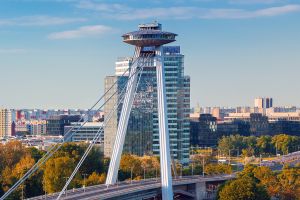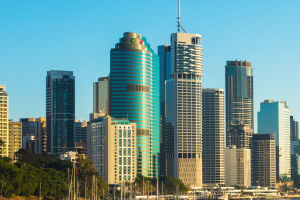Standing gracefully over Burrard Inlet, the Lions Gate Bridge is much more than a mere transportation link.
Since its completion in 1938, this iconic structure has become a symbol of Vancouver, connecting the city's vibrant downtown to the serene beauty of North and West Vancouver.
But how did this remarkable feat of engineering come to be, and what makes it such an enduring emblem of the region?
A Bold Vision for the Future
The idea for the Lions Gate Bridge emerged in the early 20th century when the growing population of Vancouver created a need for better connectivity. Prior to the bridge's construction, the only way to reach the scenic areas of North and West Vancouver was by ferry. As Vancouver expanded, developers and local businessmen recognized the potential of the lush, undeveloped land across the inlet, but they needed a faster, more reliable route to unlock it.
One of the key figures behind the project was Alfred James Towle Taylor, a wealthy entrepreneur who saw the potential in developing the land on the north shore. With backing from the Guinness family, Taylor managed to secure funding for the ambitious bridge project.
The Guinness family's involvement, particularly their vision of transforming Vancouver into a global city, was instrumental in pushing the project forward despite numerous political and logistical hurdles.
Engineering Marvel and Architectural Beauty
Designed by Montreal-based engineer Philip Louis Pratley, the Lions Gate Bridge was a masterpiece of its time. The three-lane suspension bridge was built using cutting-edge technology, with its main span measuring 473 meters (1,550 feet) and soaring towers that stand at 111 meters (364 feet) high.
Named after the "Lions," two prominent mountain peaks overlooking the city, the bridge's construction was no small feat. Workers labored tirelessly to complete it during the Great Depression, a period marked by economic hardship.
History of Lions Gate Bridge
Video by History of BC
The bridge's Art Deco design elements, like the elegant steel arches and decorative lighting, made it more than just a functional structure. It was a symbol of hope and resilience for the city, a beacon of progress during challenging times. Construction took about a year and a half, and the bridge officially opened to traffic on November 14, 1938. Thousands gathered to witness the opening ceremony, marking a new era of development for the Vancouver region.
Becoming a Cultural Icon
Over the decades, the Lions Gate Bridge has become deeply embedded in Vancouver's cultural identity. Its graceful silhouette is prominently featured in films, postcards, and local art. The bridge is not just a means of transportation but also a gateway to the North Shore's natural wonders, including Grouse Mountain, Cypress Mountain, and the picturesque seaside town of Horseshoe Bay.
The bridge has also become a focal point for tourism, drawing countless visitors who marvel at its impressive structure while enjoying breathtaking views of the inlet and city skyline. On any given day, you'll find locals and tourists alike strolling along the pedestrian walkways, capturing snapshots of the iconic scene.
Modern Upgrades and Preservation Efforts
Despite its age, the Lions Gate Bridge has undergone several upgrades to keep up with modern safety standards and increased traffic demands. In 2001, the bridge underwent a major renovation that included replacing the entire suspended structure piece-by-piece without closing it to traffic. This delicate operation was a testament to both engineering prowess and respect for preserving the bridge's historical significance.
The upgrades ensured that the bridge could continue serving Vancouver's residents and visitors for decades to come, maintaining its status as a vital part of the city's infrastructure. Today, it stands as a reminder of the city's resilience and forward-thinking nature, embodying the spirit of Vancouver.
A Symbol of Connection and Unity
The Lions Gate Bridge is more than just steel and concrete—it's a symbol of connection, unity, and ambition. It represents the dreams of those who dared to transform a city and the perseverance it took to build such an iconic structure in the face of adversity.
Whether you're crossing it for the daily commute or admiring it from Stanley Park's seawall, the bridge remains a beloved Vancouver landmark, a testament to the city's rich past and promising future.


